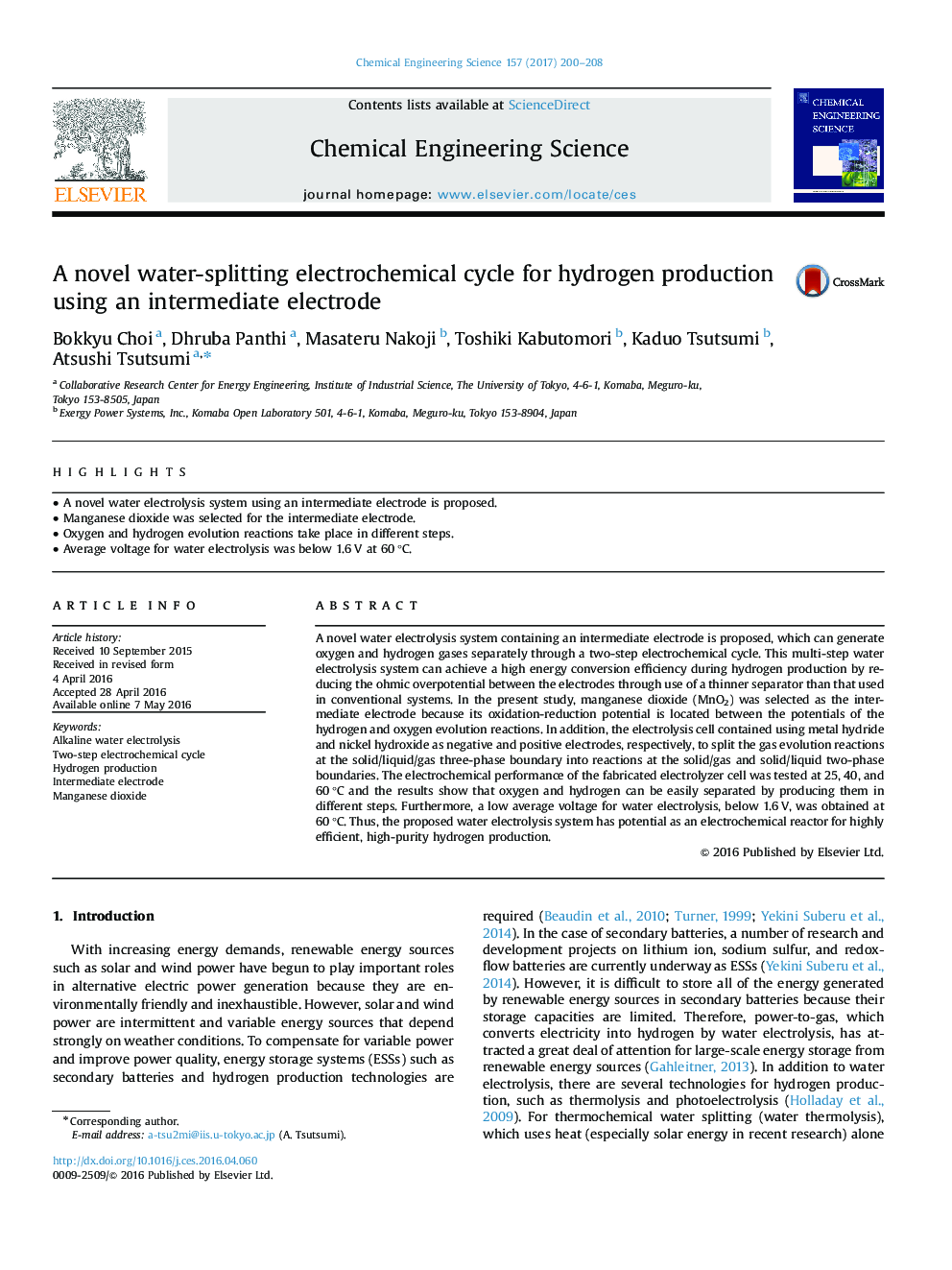| Article ID | Journal | Published Year | Pages | File Type |
|---|---|---|---|---|
| 6467856 | Chemical Engineering Science | 2017 | 9 Pages |
â¢A novel water electrolysis system using an intermediate electrode is proposed.â¢Manganese dioxide was selected for the intermediate electrode.â¢Oxygen and hydrogen evolution reactions take place in different steps.â¢Average voltage for water electrolysis was below 1.6 V at 60 °C.
A novel water electrolysis system containing an intermediate electrode is proposed, which can generate oxygen and hydrogen gases separately through a two-step electrochemical cycle. This multi-step water electrolysis system can achieve a high energy conversion efficiency during hydrogen production by reducing the ohmic overpotential between the electrodes through use of a thinner separator than that used in conventional systems. In the present study, manganese dioxide (MnO2) was selected as the intermediate electrode because its oxidation-reduction potential is located between the potentials of the hydrogen and oxygen evolution reactions. In addition, the electrolysis cell contained using metal hydride and nickel hydroxide as negative and positive electrodes, respectively, to split the gas evolution reactions at the solid/liquid/gas three-phase boundary into reactions at the solid/gas and solid/liquid two-phase boundaries. The electrochemical performance of the fabricated electrolyzer cell was tested at 25, 40, and 60 °C and the results show that oxygen and hydrogen can be easily separated by producing them in different steps. Furthermore, a low average voltage for water electrolysis, below 1.6 V, was obtained at 60 °C. Thus, the proposed water electrolysis system has potential as an electrochemical reactor for highly efficient, high-purity hydrogen production.
